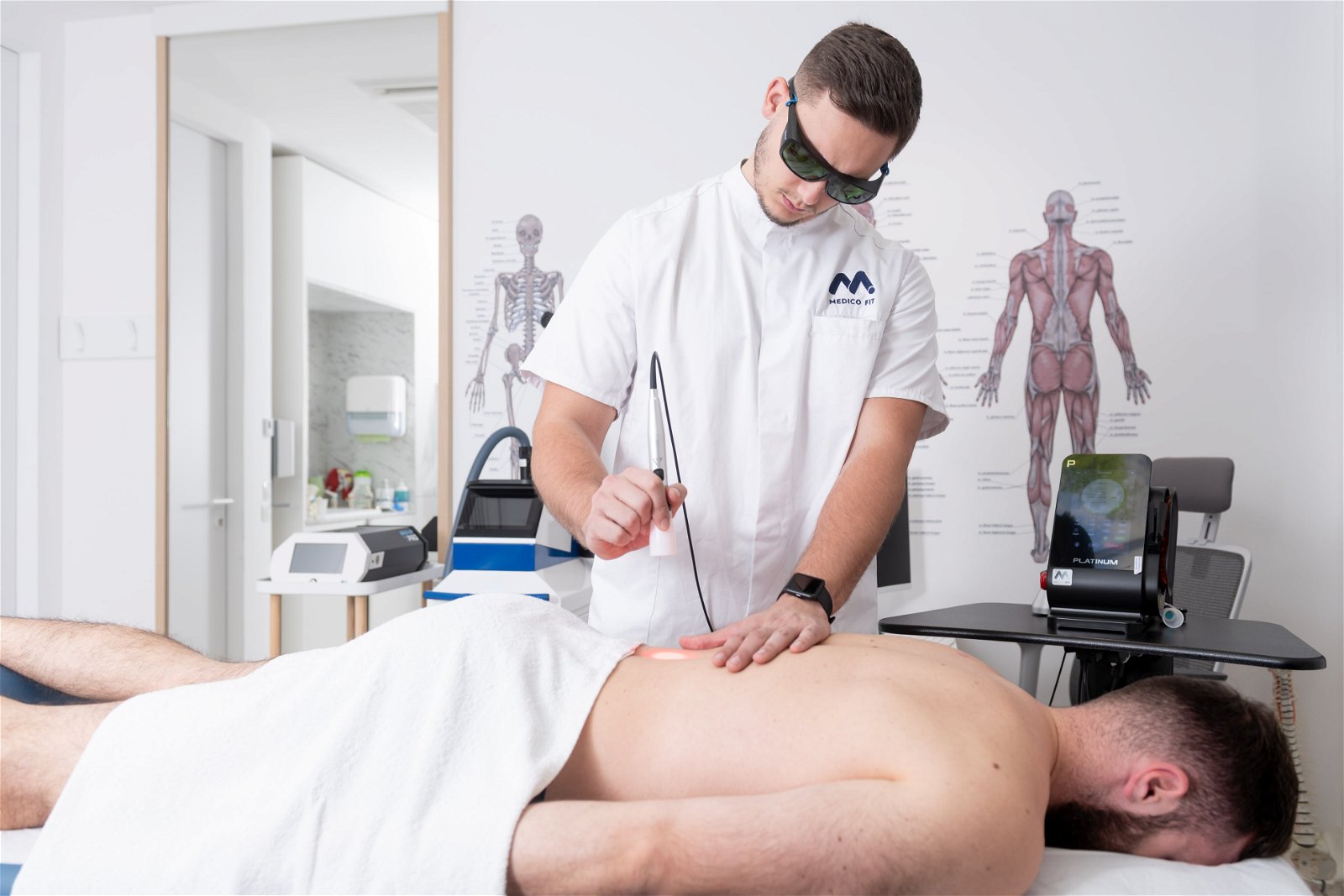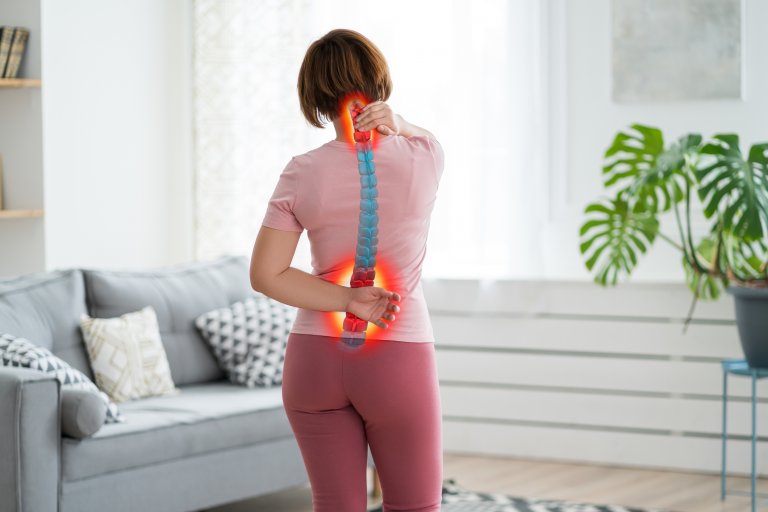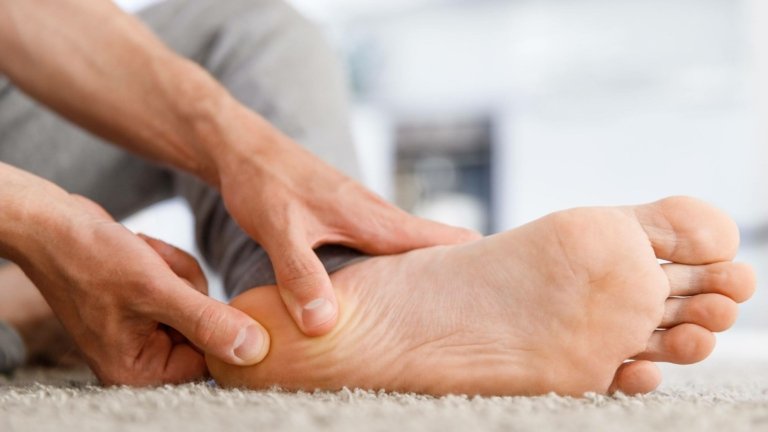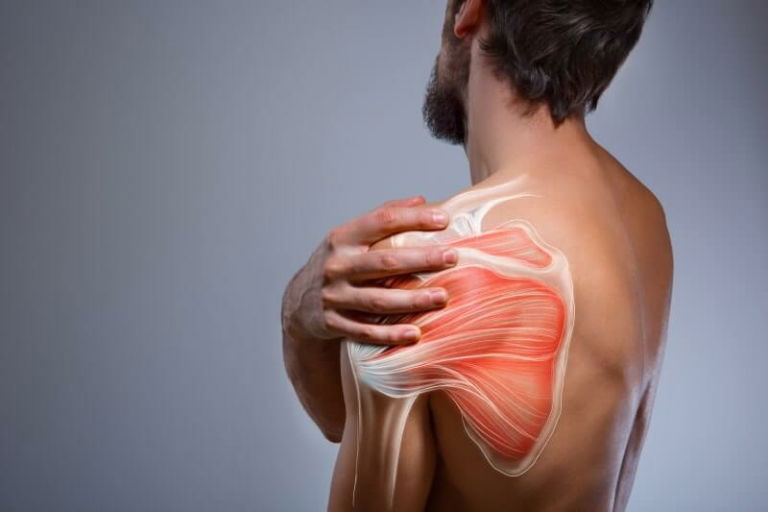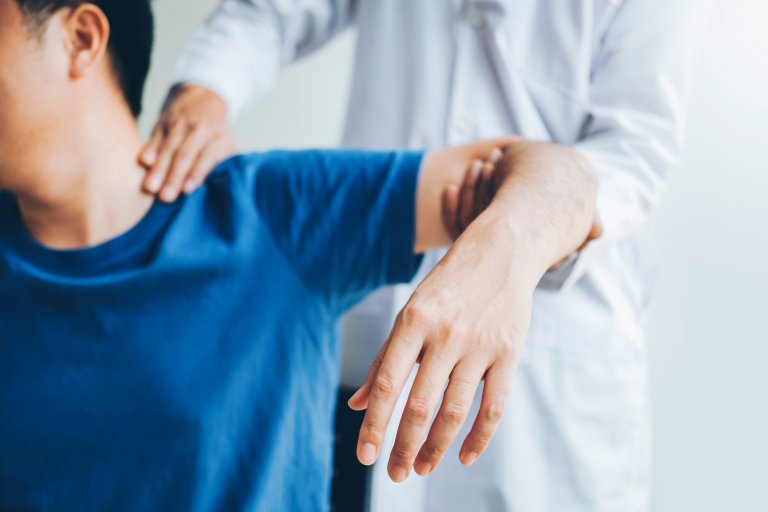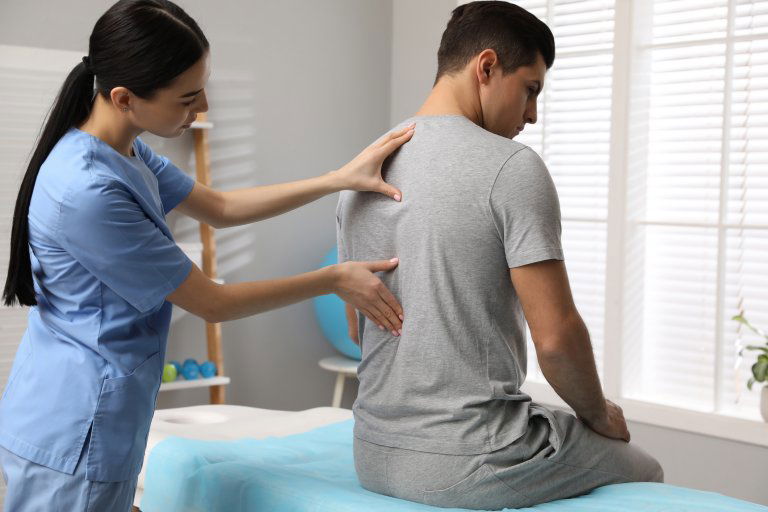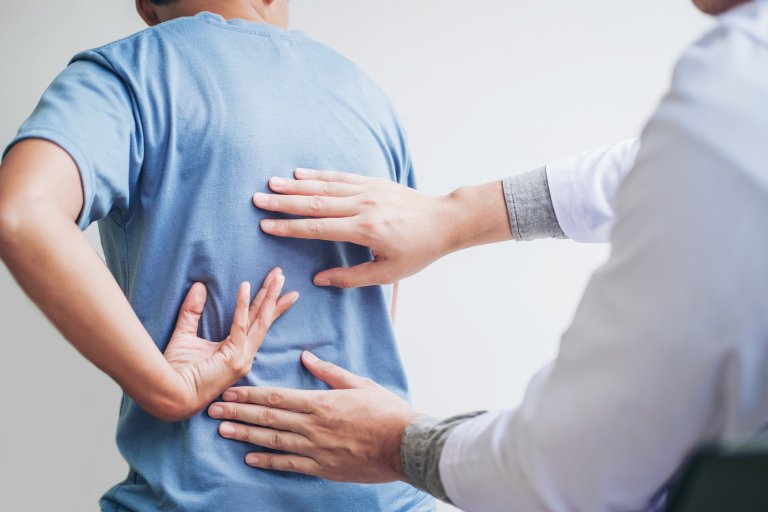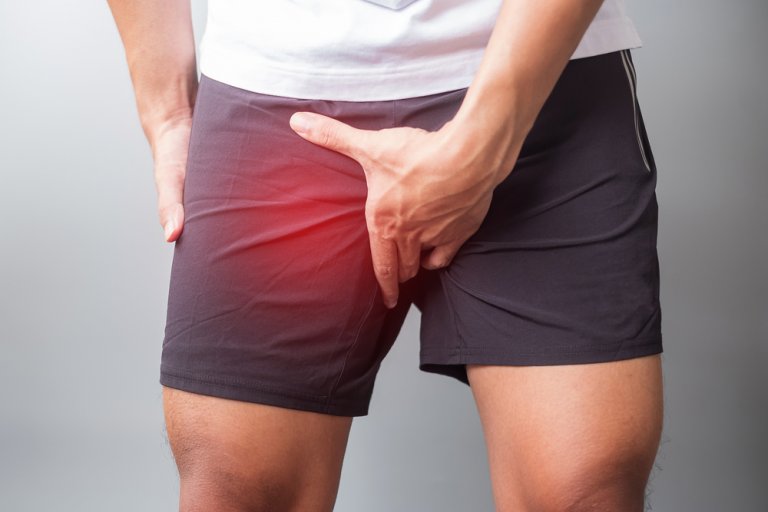-
Anterolisthesis
-
Arachnoid diverticulum
-
Cervicobrachialgia
-
Central protrusion
-
Disc desiccation
-
Dextroconvex deviation of the spine
-
Disc extrusion
-
Foraminal stenosis
-
IV chondrosis
-
Lumboischialgia
-
Lumbosacral plexus disorder
-
Disc osteophyte complex
-
Radiculopathy
-
Retrolisthesis
-
Rudimentary disc/span>
-
Sacroiliitis
-
Sequestrated disc
-
Sinistroconvex deviation of the spine
-
Spondyloarthrosis
-
Protruded disc
-
Spinal canal stenosis
-
Broad-based disc protrusion
-
Transpedicular fixation with spondylodesis/span>
Each vertebra has a thick part of bone in front, called the vertebral body. There are spaces between the vertebrae that allow nerves (nerve roots) to freely exit the spinal cord to other parts of the body. Anterolisthesis is a type of spondylolisthesis in which the upper vertebral body is positioned abnormally compared to the vertebral body below it. More specifically, the upper vertebral body slips forward on the one below.
The amount of slippage is graded on a scale from 1 to 4. Grade 1 is mild (20% slippage), while grade 4 is severe (100% slippage). Lower grades do not necessarily cause symptoms, while severe forms can lead to neurological disorders and nerve damage.
We successfully treat anterolisthesis as part of the MEDICOFIT specialist physiotherapy for the spine.
Book a diagnostic therapy appointment for the spine >>
An arachnoid diverticulum is a rare pathological formation that occurs as a protrusion of the arachnoid membrane (a thin layer of membrane that surrounds the spinal cord) through the spinal canal.
An arachnoid diverticulum can cause a variety of symptoms, including back pain, radicular pain (pain that radiates along a nerve pathway), neurological symptoms (e.g. weakness or numbness in the extremities), and bladder and bowel dysfunction.
We successfully treat symptoms of this condition as part of the MEDICOFIT specialist physiotherapy for the spine.
Book a diagnostic therapy appointment for the spine >>
Cervicobrachalgia is a term that describes pain and stiffness in the cervical spine with symptoms in the shoulder girdle and upper extremity. It may be associated with tingling, numbness, or discomfort in the shoulder, upper back, and upper chest with an associated headache.
This term is quite outdated and is no longer used so often in clinical practice.
We successfully treat cervicobrachalgia as part of the MEDICOFIT specialist physiotherapy for the spine.
Book a diagnostic therapy appointment for the spine >>
Central protrusion is a term used in medicine, especially in neurology and orthopaedics, to describe the protrusion of an intervertebral disc in the spine towards the centre of the spinal canal. This is often the result of degenerative disc changes associated with ageing, repetitive loads, or injury.
We successfully treat central protrusion as part of the MEDICOFIT specialist physiotherapy for the spine.
Book a diagnostic therapy appointment for the spine >>
An intervertebral disc dessication or dehydration is a condition where there is a loss of water in the intervertebral disc, leading to a decrease in its elasticity and cushioning abilities. With age, the water content in the discs naturally decreases, which is part of completely normal degenerative changes. The development of changes can be accelerated by spinal injuries, being overweight, or genetic factors.
We successfully treat degenerative disc changes as part of the MEDICOFIT specialist physiotherapy for the spine.
Book a diagnostic therapy appointment for the spine >>
Dextroconvex deviation of the spine is a term that refers to a curvature of the spine where the spine is curved towards the right side of the body and has a convex shape on the right side and a concave shape on the left side. It occurs as a result of a congenital anomaly, injury, degenerative spinal diseases, or incorrect posture.
Symptoms of dextroconvex deviation of the spine can vary depending on the severity of the curvature and any associated complications. In some cases, it can cause back pain, limited mobility, uneven weight distribution, breathing problems, or digestive problems.
We successfully treat dextroconvex deviation of the spine as part of the MEDICOFIT specialist physiotherapy for the spine.
Book a diagnostic therapy appointment for the spine >>
A disc extrusion is a form of disc herniation. In this condition, the nucleus of the disc is extruded through the exterior of the disc, beyond the boundaries of the disc itself.
A disc extrusion is often associated with degenerative changes in the spine, such as osteoarthritis or spondylosis, but it can also occur due to injury or sudden movements. Symptoms of a disc extrusion may include pain, numbness, weakness, or loss of sensation in the extremities, depending on which part of the spine is affected.
We successfully treat all types of disc herniation as part of the MEDICOFIT specialist physiotherapy for the spine.
Book a diagnostic therapy appointment for the spine >>
Foraminal stenosis is a narrowing that occurs at the points in the spine where nerves exit the spinal cord. It is a type of spinal stenosis that affects the intervertebral foramen, a small opening on either side of the spine where the nerve exits are located.
In foraminal stenosis, nerve root compression occurs. Over time, pressure can damage the nerve, affecting its electrical conduction. This disrupts the transmission of signals travelling along the nerve, causing neuropathic pain and sometimes permanent nerve damage.
We successfully treat foraminal stenosis as part of the MEDICOFIT specialist physiotherapy for the spine.
Book a diagnostic therapy appointment for the spine >>
IV chondrosis (intervertebral chondrosis) is a degenerative disease of the intervertebral discs in the spine. It occurs primarily in older individuals and is a result of age-related changes and wear and tear of the cartilage tissue of the intervertebral discs.
The most common symptom is chronic pain in the spine, which may worsen with movement or prolonged sitting. Most patients respond positively to conservative treatment, but advanced cases may require surgery.
We successfully treat IV chondrosis as part of the MEDICOFIT specialist physiotherapy for the spine.
Book a diagnostic therapy appointment for the spine >>
Lumboischialgia (sciatica) – severe, sharp pain in the lower back that spreads through the gluteal region into the leg, sometimes all the way to the toes. Individuals with lumboischialgia assume an antalgic position of the body – the torso is spontaneously bent to the healthy side and forward to reduce pressure on the sciatic nerve root. Typical symptoms include pain, tingling, weakness, poor control of leg movements, and poor foot support.
Foot paresis (foot drop) is also possible, where there is weakness in the muscles of the lower legs and impaired and/or limited function of the foot.
We successfully treat lumboischialgia as part of the MEDICOFIT specialist physiotherapy for the spine.
Book a diagnostic therapy appointment for the spine >>
Lumbosacral plexus disorder refers to injury or dysfunction of the nerve structures that make up the lumbosacral plexus. This plexus is a network of nerves located in the region of the lumbar spine and sacrum and innervates the lower extremities.
A disorder of this plexus can cause a variety of symptoms, including lower back and leg pain, numbness, weakness, or difficulty controlling the muscles of the lower body.
We successfully treat nerve disorders as part of the MEDICOFIT specialist physiotherapy for the spine.
Book a diagnostic therapy appointment for the spine >>
A protruded disc refers to a condition where an intervertebral disc (disc) bulges out of the normal space between the vertebrae in the spine, without disrupting the outer fibrous ring. This can cause pressure on the spinal nerves or spinal cord, which can lead to pain, numbness, weakness, or other symptoms.
A protruded disc can occur due to the natural ageing process, degenerative changes in the spine, injuries, excessive strain on the spine, or abnormal movements.
We successfully treat all types of disc herniation as part of the MEDICOFIT specialist physiotherapy for the spine.
Book a diagnostic therapy appointment for the spine >>
Radiculopathy is radiating pain that occurs as a result of a pinched nervein the spine . Specifically, it occurs if one of the nerve roots (where the nerves join the spinal cord) is compressed or irritated.
Radiculopathy causes pain, tingling, or numbness in the area innervated by the pinched nerve. There are three types of radiculopathy – cervical, thoracic and lumbar. The type depends on where in the spine the compression occurred.
We successfully treat radiculopathy as part of the MEDICOFIT specialist physiotherapy for the spine.
Book a diagnostic therapy appointment for the spine >>
Retrolisthesis is a medical term that describes a backward displacement of a vertebra relative to the adjacent vertebrae in the spine. It is a form of spinal instability where one vertebra slips backward compared to the vertebra below or above it.
This condition can be present in any part of the spine, but is most often observed in the lumbar and cervical regions of the spine. It often occurs in adolescents or in the elderly with degenerative changes in the spine.
We successfully treat retrolisthesis as part of the MEDICOFIT specialist physiotherapy for the spine.
Book a diagnostic therapy appointment for the spine >>
Rudimentary discs are intervertebral discs that are congenitally not fully developed, and therefore cannot perform their function – in rare cases, the disc may even be completely absent (in which case the adjacent vertebrae are completely fused).
Rudimentary discs can cause persistent back or neck pain, depending on the region of the spine.
We successfully treat symptoms of this condition as part of the MEDICOFIT specialist physiotherapy for the spine.
Book a diagnostic therapy appointment for the spine >>
Sacroiliitis is a painful inflammatory condition that affects one or both sacroiliac joints. These joints are located at the junction of the lower spine and pelvis. Sacroiliitis can cause pain and stiffness in the buttocks or lower back, and the pain may spread down one or both legs. Prolonged standing or sitting and ascending stairs usually make the pain worse.
Sacroiliitis is difficult to diagnose. It is often mistaken for other causes of low back pain. It is closely related to a group of diseases that cause inflammatory arthritis of the spine – spondyloarthritis. The most common cause is ankylosing spondylitis. We successfully treat sacroiliitis as part of the MEDICOFIT specialist physiotherapy for the spine.
Book a diagnostic therapy appointment for the spine >>
A sequestered disc is the most serious type of herniated disc. In this condition, part of the disc’s nucleus separates and protrudes through the outer layer of the disc, becoming isolated from the main part – it is separated from the extrusion site.
This can put severe pressure on the spinal nerves or spinal cord and cause serious symptoms and complications. A sequestrated disc usually develops from a protruded or extruded disc, but is even more serious and requires urgent treatment.
We successfully treat degenerative conditions as part of the MEDICOFIT specialist physiotherapy for the spine.
Book a diagnostic therapy appointment for the spine >>
Sinistroconvex deviation of the spine is condition where the spine is curved towards the left side of the body and has a convex shape on the left side and a concave shape on the right side. It occurs as a result of a congenital anomaly, injury, degenerative spinal diseases, or incorrect posture.
This curvature can cause a variety of symptoms, from mild back pain to more serious problems, such as limited mobility, poor posture, and in severe cases, even compression of nerves or organs. The most common cause is scoliosis.
We successfully treat sinistroconvex deviation of the spine as part of the MEDICOFIT specialist physiotherapy for the spine.
Book a diagnostic therapy appointment for the spine >>
Spondyloarthrosis or spondylosis is a degenerative disease that can cause the loss of normal structure and function of the spine – it is also called osteoarthritis of the spine. Although the main cause is ageing, the location and speed of degeneration depend on many factors.
The main symptoms are pain, limited mobility, and tingling due to compression of the nerve roots. The degenerative process can affect the cervical, thoracic (less commonly) or lumbar region of the spine. All structures in the spine can be affected – discs, facet joints, bones and ligaments.
We successfully treat spondyloarthrosis as part of the MEDICOFIT specialist physiotherapy for the spine.
Book a diagnostic therapy appointment for the spine >>
A protruded disc refers to a condition where an intervertebral disc (disc) bulges out of the normal space between the vertebrae in the spine, without disrupting the outer fibrous ring. This can cause pressure on the spinal nerves or spinal cord, which can lead to pain, numbness, weakness, or other symptoms.
A protruded disc can occur due to the natural ageing process, degenerative changes in the spine, injuries, excessive strain on the spine, or abnormal movements.
We successfully treat all types of disc herniation as part of the MEDICOFIT specialist physiotherapy for the spine.
Book a diagnostic therapy appointment for the spine >>
Spinal canal stenosis is the medical term for a narrowing of the spinal canal, which can cause pressure on the spinal cord or nerve roots. This condition most often occurs in the cervical and lumbar region of the spine, which are the most flexible regions of the spine.
We successfully treat spinal stenosis as part of the MEDICOFIT specialist physiotherapy for the spine.
Book a diagnostic therapy appointment for the spine >>
A broad-based disc protrusion is a specific type of intervertebral disc herniation involving a disc protrusion that encompasses more than 25% to 50% of the volume of the intervertebral space. A broad-based disc protrusion is a serious condition that can cause significant problems and requires a careful diagnostic evaluation and an individualised approach to treatment.
We successfully treat broad-based disc protrusion as part of the MEDICOFIT specialist physiotherapy for the spine.
Book a diagnostic therapy appointment for the spine >>
Transpedicular fixation with spondylodesis is a surgical procedure intended to stabilise the spine where screws are inserted through the pedicles of the vertebrae, which are then connected to rods or plates. Spondylodesis is the fusion (joining) of two or more vertebrae to eliminate pain and improve spinal stability. It is often necessary for spinal stenosis, spinal injuries, scoliosis, or fractures of vertebrae.
Rehabilitation after a spinal surgery is successfully provided as part of the MEDICOFIT specialist physiotherapy for the spine.
